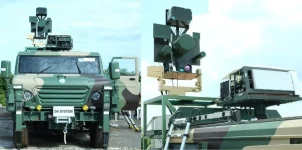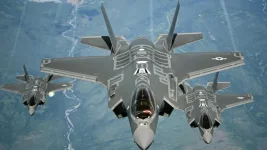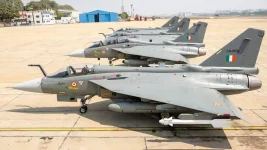- Views: 642
- Replies: 2

The modern battlefield is a rapidly evolving technological landscape, where unmanned aerial vehicles (UAVs), or drones, are taking on increasingly significant roles.
While these drones offer valuable tools for reconnaissance and situational awareness, they also pose a serious threat when deployed by hostile forces.
To mitigate this threat, the Indian Ministry of Defence has launched the iDEX Challenge, seeking innovative solutions to protect armored vehicles from enemy drones.
The Challenge
The iDEX Challenge calls for the development of a sophisticated Anti-Drone System specifically designed to integrate with existing armored platforms like the T-72, T-90, BMP, and Arjun tanks.This system must have the power to detect, identify, track, and neutralize enemy drones' RF transmissions –all while operating flawlessly within the constraints of these existing vehicles.
Key Objectives
To succeed, this anti-drone system must achieve several critical objectives:- Detection: Early detection of enemy drones is paramount. The system must reliably detect RF transmissions from a minimum range of 5 kilometers, giving forces ample time to react.
- Identification/Classification: Distinguishing friendly drones from those deployed by adversaries is crucial. The system must accurately identify the specific types of drones to minimize the risk of friendly fire incidents.
- Tracking: Continuous, real-time tracking of hostile drones ensures forces maintain full situational awareness, enabling them to develop effective countermeasures.
- Neutralization: Disrupting command and control signals is the end goal. The system must use jamming or other electronic warfare methods to disable drones, with minimal risk to friendly forces or civilian infrastructure.
Integration: The Overarching Hurdle
Perhaps the most significant challenge lies in the very heart of the iDEX project – seamless integration.The anti-drone system must function in concert with the diverse electronics of multiple tank types (T-72, T-90, BMP, and Arjun).
This requires careful design and a deep understanding of the existing systems to prevent interference and maximize functionality.
Why This Matters
The need for robust anti-drone defenses on armored vehicles is undeniable. Drones are affordable, easily deployed weapons for intelligence gathering, surveillance, and the delivery of explosive payloads.A system that successfully counters these threats will offer a significant tactical advantage and increase the survivability of armored forces in modern combat zones.
The iDEX Challenge underscores India's commitment to cutting-edge defense technology. The solutions that emerge from this initiative have the potential to protect Indian armored forces and shape the future of counter-drone warfare.



